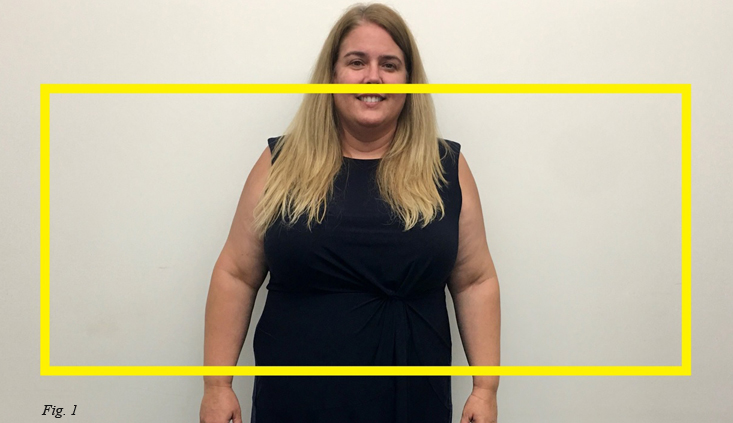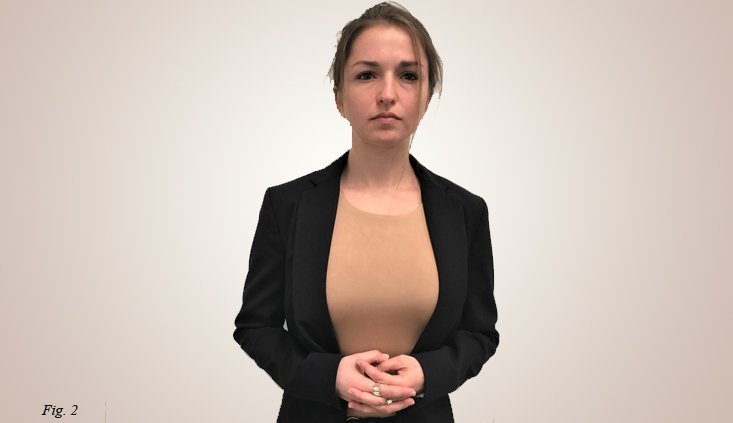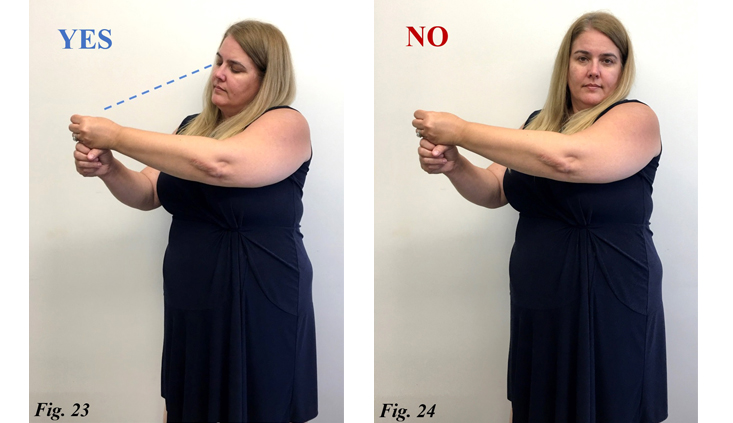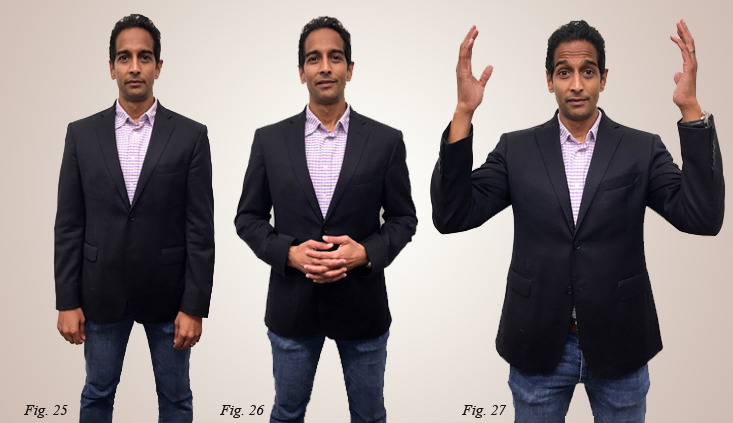It’s not what you say, but how you say it
How your body can put emphasis on the spoken word in trial
Think back to law school. What did we learn? Think back to all the seminars we have attended. What did we learn? Think back to all of the cases we have tried. What did we learn? We learned what to say, but not how to say it.
It is not what we say, but how we say it, that persuades a jury that our client should prevail. Words alone provide facts. But facts don’t always win cases. As Bert Decker, in his book, You’ve Got To Be Believed To Be Heard, states, “People buy on emotion and justify with fact.”
If your goal is to influence, to persuade, to sell, you’ve got to say it and say it with impact. In writing we can emphasize our words with underlining, CAPITAL LETTERS, italics, bold letters, bullet points and exclamation points!!!! Now, let’s talk about how your body can put emphasis on the spoken word.
Your body can make your words impactful and memorable. Your eyes, face, head, hands, arms and stance provide nonverbal cues that add meaning and truth to your words. If you intend to persuade, your jurors have to be ready to believe you. To be believed you need to be relaxed, confident, and natural. When you are prepared, you are relaxed. When you are relaxed, you are confident. When you are prepared, relaxed and confident you don’t have to play the role of an attorney. You are the attorney.
Not reading body language, but using it
In Winning Body Language, Mark Bowden doesn’t teach how to read body language, he teaches how to use your body language to its full potential. He warns, “Unless an audience (juror) sees the right image, it doesn’t hear the right message.” Let’s look at how our body can help the jurors see the right image.
The eyes
Some say the eyes are the gateway to the soul. I don’t know if I would go that far, but the eyes do convey whether you are connected with the person to whom you are speaking.
Eye contact is most important during voir dire. Eye contact means you are interested in the juror and the juror’s story. Everyone knows that eye contact is important when addressing the jury during opening statement or argument, but it is also important during direct and cross-examination. When you make meaningful eye contact, not only is the person you are speaking with engaged, but the jurors watching you also become engaged.
Eye contact must be meaningful. Attorneys often mistake glancing at the jurors as eye contact. A glance does not make a connection. Although researchers differ on the precise amount of time that eye contact should be maintained, many say three to ten seconds is optimal. The length of time will depend on the situation. When questioning a juror, longer eye contact is appropriate. When looking at a juror to gauge the impact of a witness’s testimony, shorter eye contact will suffice. When engaging in longer eye contact the goal is to “feel” what the other person is feeling. It is not a staring contest.
During voir dire, some jurors will tell you things you don’t want to hear. The natural feeling is to look down or look away. Fight the temptation. Maintain your eye contact. However, if a juror is relating a personal sad story, maintaining the same eye contact may convey that you don’t care about the story the juror is telling you. In this situation, a slight drop of the head and the eyes would be appropriate.
People have asked, “What is the appropriate way to end eye contact?” This is a good question. The best answer I can give is an example. Have you ever engaged in a conversation with a stranger at a party, who after a minute or two abruptly ended eye contact and left you feeling stranded? When you abruptly change your eye contact from the juror you are speaking with to another juror without permission, you have abandoned that person. To avoid abandoning the juror you are conversing with, when it is time to move on, you can smile, nod, hold the eye contact for a second or two longer and then move on. If appropriate, you can add a “thank you,” or “I appreciate you sharing that.”
In his book, The Power of Eye Contact, Michael Ellsberg refers to “agendaless presence.” This is the ability to be with another person, experiencing him, listening to what he is saying, without trying to impose an outcome or desired goal on the interaction. An agendaless presence is non-threatening. Agendaless presence is required during voir dire.
Ellsberg discusses the opposite sides of eye contact: eye dancing versus eye groping. Eye dancing is a give and take. It does not impose one’s will on someone else. Eye groping is a one-way touch. There is no back and forth. The first is good. The second is horrible. I would add a third which is not good, not horrible, just bad. This is eye darting, where your eyes land on one person but then dart to another and then another. It conveys that you are shopping around to find someone with whom you actually care to speak.
For those of us who are uncomfortable making eye contact, Ellsberg has developed a method to systematically desensitize this ill feeling.
Make progressively longer eye contact with a friend or family member in an intentional exercise.
Make infinitesimally brief eye contact with strangers on the street.
Make longer eye contact with strangers such as waiters, salesclerks, cashiers.
Make substantial eye contact during conversations with friends, family and others whom you know.
Make substantial eye contact during conversations with people you’ve just met.
The mouth
Besides the eyes, the second most important part of the face is your mouth, and the most important part of your mouth is your smile. However, the smile needs to be genuine. A forced smile is phony and being phony is worse than being somber. When I was a prospective juror on a case, an attorney asked the prospective juror sitting next to me how he felt about being a juror. He replied, “I’m really uncomfortable.” When asked why, he said, “Because all you attorneys are grinning at me.” A grin is not a smile. A grin is how a bad used car salesman greets you.
Sincere smiling is not just showing your teeth. A real smile raises the tissue above your cheekbones. A real smile can be seen in your eyes. If you are the type of person who doesn’t smile often, practice smiling. Begin by exaggerating your smile. Exaggerate the lips, the mouth, the face and the eyes. Practice the exaggerated smile in front of the mirror every day until you feel comfortable making a natural smile.
Although a real smile is pleasing, there are times when a smile in the courtroom is inappropriate. If, when you are questioning a juror and smiling, she tells you her husband passed away the year before, you better lose that smile and lose it quick. When you are questioning your medical expert who is discussing the surgery your client needs, ask yourself whether you should be smiling. The takeaway is simple: Unless the situation dictates otherwise, smile. When the situation calls for a sad, or caring or concerned expression, you will pay dearly for an inappropriate smile.
The head
The right head movement can help convey a message. When a prospective juror is responding to a question, a slow simple nod of the head up and down will convey to the juror that you are not judging him. Nodding also invites the juror to continue speaking. When questioning an independent witness who is giving you an answer you like, a slow nod up and down conveys to the witness you appreciate his testimony. A single and more abrupt nod downward is a non-verbal cue to the juror or witness that you have heard the answer and it is time to move on.
During voir dire and on direct examination, a slight tilt of the head or a slight turn of the head while leaning forward conveys that you want to hear what the person is saying.
The zone of gesture
In The Articulate Advocate, Brian Johnson and Martha Hunter describe the Zone of Gesture. Natural gestures flow in a rectangle approximately two feet tall by four feet wide. (See Figure 1.) They extend vertically from the waist to the nose. Gestures involve the whole arm from the shoulder to the hand. Although this is the natural way to gesture, when in front of an audience many people confine their gestures from the forearm to the hand, keeping the elbow and the upper arm pinned to the side. The result is an unnatural gesture. A persuasive gesture is long, smooth and loose.
Johnson and Hunter as well as Bowden in Winning Body Language emphasize where and how the hands should be positioned when not gesturing. Bowden calls it the Truth Zone while Johnson and Hunter call it the Ready Position. The hands are directly in front of the waist. The hands loosely touch. There is a little bit of space that separates the forearms from the abdomen. (See Figure 2.) Although this may seem unnatural, it is the best place to gesture from. In this neutral position, the jurors may not even notice your hands. They will be focused on your eyes.
Hand and arm gestures
In The Articulate Advocate, the authors cite a study that found congenitally blind children gesture when they talk, even when speaking to other blind people. Although gestures will aid in your presentation, don’t force a gesture – it doesn’t work. The last thing you want a juror to think is that you are trying to manipulate the way they feel and think with some parlor trick.
* * *
Gestures you may want to consider using in your next trial are illustrated here. The italicized words will explain how to make the gesture and the words in quotes are examples of statements you might make when you use the gesture. When looking at the photographs, notice how the facial expression can make the gesture real.
* * *
For extra emphasis, combine some of your gestures with an appropriate movement of the head and/or facial expression. Because you are already conveying the message with your gesture, the head movement should be very subtle.
You are the best trial exhibit. When you are examining a doctor about a neck injury, put your hand on your neck. When you tell the jury about the hyperextension flexion motion your client was subjected to in the rear-end collision, slowly bend your neck backward and then forward. While doing this tell the jury: “This is extension, this is flexion.” Tell the jury: “This motion didn’t happen over the five seconds, but over a period of one-tenth to two-tenths of one second.” When saying this, clap your hands together and say, “This is the time it took to extend all the way back and all the way forward.”
When using your hands or a model to demonstrate, the error attorneys often make is looking at jurors rather than looking at their hands. You want the jury to watch what you are demonstrating. If not, why are you demonstrating? When you look at the jurors the jurors will look at your face or your eyes. The solution is simple. Look at your hands when demonstrating with your hands. If you are using your hands to demonstrate the motion of two vertebral discs, look at your hands. Figure 23 shows the correct way to demonstrate. Figure 24 is the incorrect way to demonstrate. Before you look at the jury, stop talking, stop demonstrating, return your hands to your body and turn your body back to the jurors. To make this gesture natural, you need to practice.
Gestures to avoid
Now that we have addressed purposeful gestures, let’s talk about what we unconsciously do with our hands and arms. Here are six gestures that should be avoided:
Don’t place one hand over the other in front of your groin. This is referred to as the Fig Leaf position. It may have been appropriate for Adam and Eve, but it is not appropriate for a relaxed, confident and natural trial advocate.
Don’t put a hand in your pocket, or worse, hands in your pockets. What image does that send? How are you going to gesture from that position?
Don’t hold a pen in your hand unless you are actively writing. This will interfere with your gestures, and worse, may remind jurors of that teacher they hated who pointed a pen at them.
Don’t play with your hair, your hands, your keys, or anything else. This not only makes you appear nervous, but it also distracts from what you are saying.
Don’t cross your arms. What are you protecting yourself from? You want to invite the jury in, not keep them away.
Don’t put your hand on your hip, especially if you are a woman and your jurors consist of middle-age or older men. For some reason this gesture may be perceived as bossy.
The stance
Are you a skier? Then you know that no single snow ski is best for all terrain, just as no one stance is best for the entire trial. Your stance should match the image you want to project. With that said, there is a stance that is used most of the time. The Articulate Advocate describes this as the basic stance. Begin by planting your feet on the courtroom floor. Stand with your feet at a comfortable distance apart. Place one foot an inch or two ahead of the other. Do not utter a word until the feet are planted and you are standing still. Take another moment to pause, take a breath and feel the floor.
Balance your knees and hips over your feet. Unlock your knees. The knees should feel flexible. Next, balance the weight of your torso evenly over both legs. If you feel your weight shift to one side, shift your weight back to center.
During voir dire, your stance is different because your goal is to get the prospective jurors talking. No one wants to carry on a conversation with a stranger who appears stiff or domineering. During voir dire adopt a more casual stance, weight on one leg more than the other. Rather than stand at “attention,” pretend that the judge has just told you to stand “at-ease.” The shoulders should be relaxed. Your arm could rest on the lectern.
Your stance will change during opening statement when you want the jurors to see you as a teacher who they should believe. Lose the relaxed stance and stand more erect. The head sits straight; it isn’t tilted to the side. The feet should be shoulder width and the weight should be evenly divided on the legs. Although you want to stand more erect during opening than during voir dire, make sure the knees are unlocked to allow you to move at will without first having to unlock your knees.
The body planes
In Winning Body Language, Bowden identifies three planes where people keep their hands: the Grotesque Plane, the Truth Plane and the Passion Plane. The arms and hands typically reside in one of these planes. In the Grotesque Plane, the arms hang down to the sides. (See Figure 25.) When you stand still with your arms hanging down, the body takes this as a signal to rest. The audience will also rest. If you want jurors to listen to you, keep your arms and hands out of the Grotesque Plane.
The Truth Plane is where the arms and hands should reside. The hands rest above the waistline. Bowden recommends that you stand upright and bring your hands to your navel, and the fingers of the left and right hand gently interlace. The hands are held lightly over the navel, with the palms softly touching your stomach. (See Figure 26.) Jurors view this position as “centered,” “controlled,” or “calm.” An added benefit of keeping the hands in the Truth Plane is the ease of making gestures from this position.
The third plane is the Passion Plane. The hands come close to your chest or above. (See Figure 27.) Slow, gentle gestures in the Passion Plane can convey sincere emotion, but more normal or quicker motions in this plane can be perceived as aggressive. If your gestures are wild or unrestrained, someone may consider you a tad crazy.
During trial avoid the Grotesque Plane, live in the Truth Plane, and occasionally visit the Passion Plane, when it serves your purpose. There are exceptions. When you are previewing damaging evidence against you in opening statement, you may want to deliver it in the Grotesque Plane. The same would be true when reviewing damaging evidence during argument. However, when reviewing the absurd contentions the defense will or has made, you may want to go in the Passion Plane to convey that the defense (and perhaps its messenger) is a bit unhinged. A word of caution: If you intend to leave the Truth Plane during opening or closing, practice in front of a few people and ask them how it felt.
Movement
As with hand and arm gestures, non-purposeful movement doesn’t add to the message, it detracts. Before you move, ask yourself what you intend your movement to convey. During voir dire, a step toward the juror who is speaking conveys a desire to feel closer to the witness. During a direct or cross-examination, when you change topics, you may consider purposefully moving from one point in the courtroom to another. This will become a non-verbal cue to the jury that you are changing topics.
Emotional incongruence
Bowden cites a study by Albert Mehrabian (a professor emeritus of psychology, UCLA) that the words, sound, and body need to support one another. In the case of any incongruence, the receiver of the message will trust the predominant nonverbal cues rather than the potential literal meaning of the words. Although not part of the study, this has more importance for the trial attorney. We are the messenger of truth. If we display emotional incongruence, the jurors will distrust what we say. Always strive to be emotionally congruent. With practice, if you believe in what you say, the body and the voice should naturally follow. However, beware. No matter how well you master the technique, if you don’t believe in what you say, the body and the voice will belie your words.
Conclusion
The way to make your body work for you is practice. Practice doesn’t mean the day before trial. Imagine what a professional athlete or entertainer would say if you told them they only needed to practice the day before the game or the performance. They would tell you you’re crazy because they know their livelihoods depend on being their best. Your client depends on you being your best. Practice, practice, practice.
John F. Denove

John F. Denove specializes in major injury cases, product liability, medical malpractice and insurance bad faith litigation with Cheong, Denove, Rowell, Bennett & Hapuarachy. He has tried more than 150 civil jury trials to verdict. He was named Consumer Attorneys Association of Los Angeles Trial Lawyer of the Year in 1993 and received the Ted Horn Memorial Award in 2001. He also received the CAOC/CTLA Presidential Award of Merit in 1994, 1996, 2000, 2008, 2013 and 2014; CAOCs Outstanding President of the Year Award in 2000 and the Edward I. Pollock Award in 2006. It was his honor to serve as President of the following associations: CAALA, the Los Angeles Chapter of the American Board of Trial Advocates (ABOTA), the Italian Lawyers Association and the Cowboy Lawyers Association. He currently serves on CAOC’s Board of Directors. He is a Diplomate of the American Board of Trial Advocates and is a member of American Association for Justice (AAJ) and Public Justice. Mr. Denove was named the 2017 Loyola Law School Champion of Justice Honoree. In 2018, he was inducted into the CAALA Hall of Fame.
Copyright ©
2025
by the author.
For reprint permission, contact the publisher: Advocate Magazine




